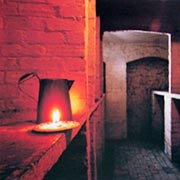The Slave Trade
Last evening following my afternoon off, I attended a Meeting, which John Coachman had told me of; and my mind now is in turmoil.
The meeting was called by a Mrs.Pearson . A’course this Mrs. Pearson be gentry, but the kind of gentry I calls a ‘real’ lady for she spake not as some on ‘em do, with screeches and fluttering and strangling of the very words which manage to squeeze themselves through pursed lips. She talked simply but not as though we ourselves were simpletons: which is something most gentry are unable to do on account they know no better.
What Mrs. Pearson talked of was the plight of the blackamoor such as Master hath at work in The Indies. Now I had never seen a blackamoor – or so I thought. Such tales as is told of these folk – that they be closer in looks and mind to apes than to humans; that they feel neither pain nor loss nor love; that the span of their lives be a scant 30 years – I looked upon such creatures as the devils of which the old Priest of my youth used to speak.
I was thus amazed when Mrs. Pearson presented her Litho Graphs (Eliza is not sure how this word is written down) to see that these dread Blackamores were nothing more than folk with browner skins than we, as was my husband’s friend, Samuel and his winsome little girl, Sophie, with whom we spent many a happy hour. They are not black like my nice, modern kitchen range, but the warm, brown colour of the Mistresses coffee that she doth drink some mornings. Neither, Mrs. Pearson did explain, be they Moorish, but make their home in warmer climes than ours which do explain why their skins be stained - for in their country it doth seldom rain and the sun always shines.
The pictures Mrs. Pearson showed did bring tears to the eyes of many assembled there and cries of “For shame!” rang from every throat at the portrayal of these folk being shipped across the seas like so many bags of flour. One Litho which will stay with me always described the low, dark interior of the very bowels of ship. Into it, like piles of faggots, were stacked rows and rows of women – some of whom held tiny infants to their breasts. Inside this cramped domain were neither facilities for ablutions nor (the very discussion of such did shock my Eliza!) chamber pots nor closet. Each woman was forced to perform her functions in full sight of all others and, when the sea did roll and tremble, the foul buckets used for this purpose did roll around the floors and spread their vile contents inches deep upon the boards on which the luckless women slept. It was also remarked upon that the rough sailors did feel entitled to use these women for sport of a kind not these days mentioned in public!
It doth beggar all belief that not just our Masters, but our jolly Jack Tars, such as stroll around the foreshore in Plymouth, be the ones to tell all manner of tall tales of these benighted folk such as that they eat babies, and know not right from wrong, and have no human intelligence. Yet these same reck it not a crime to take advantage of the poor brown women in their care and do, themselves, act the animal amongst them. Mrs Pearson hath also told us that any issue that may be born of these acts can be taken from their mothers once on land, and sold away from their mothers.
We have always known, of course, that our Master hath built his fortune up from his holdings in The Indies, but never before did I understand what an iniquitous practice this was.
Mrs. Pearson told of a Mr. Wilberforce who hath helped found the Anti-Slavery Society and who works so hard: not for the amelioration of the slave’s lot like Mr. Canning, but who has encouraged more than 5,000 petitions to be brought before Parliament. I think it shame that no woman can sit amongst those lords and gentlemen for I think were Mrs. Pearson given a seat in Parliament such barbarous treatment would not go on.



